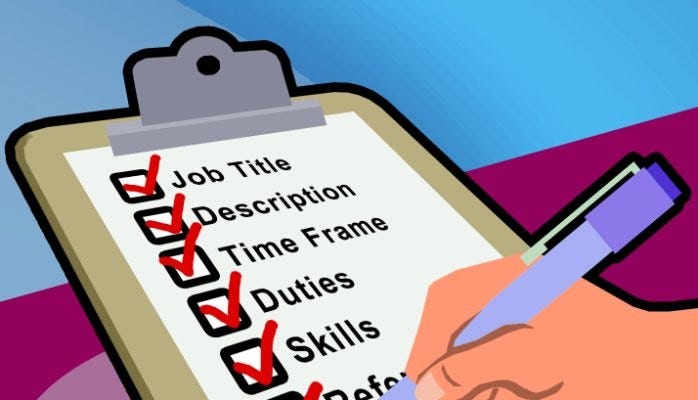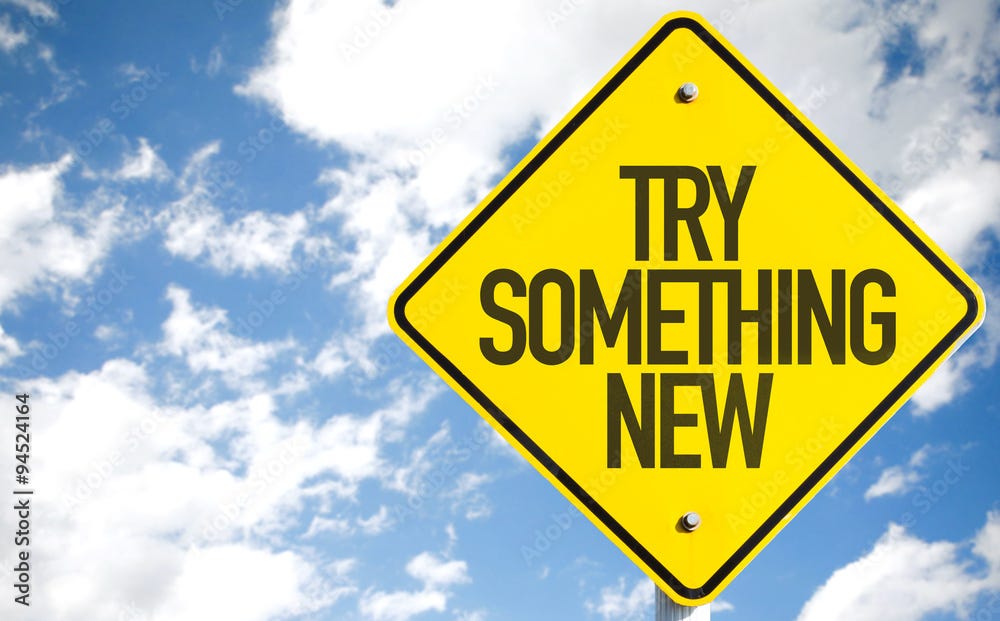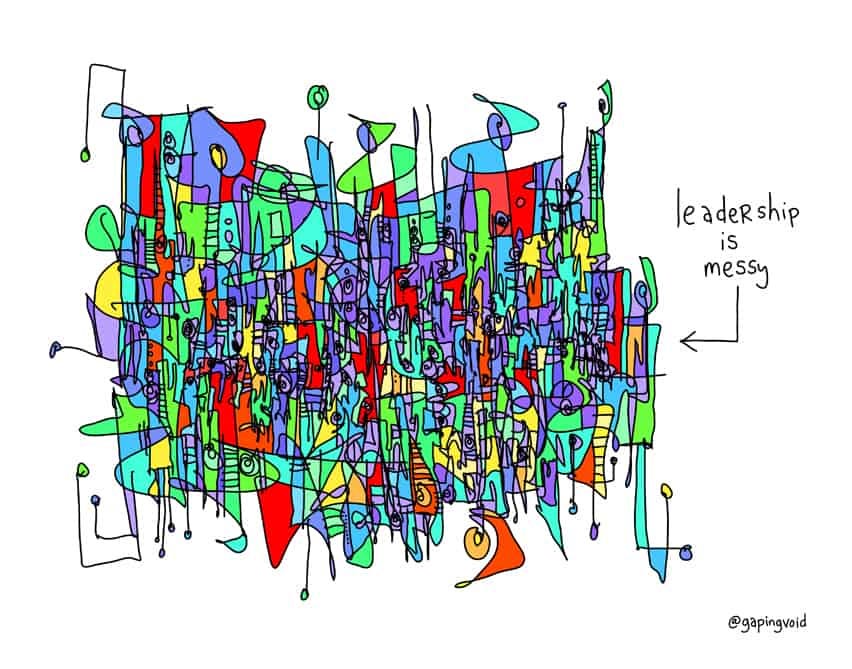Is it time time to rethink job descriptions?
Throughout my 27 years of leadership, I averaged about 130 interviews and hired about 50+ people per year that close to 5,000 leaders. I was always hiring, I was relentless with making sure we always had the right people.
Can I be completely transparent?
As I scanned the job descriptions created by corporate, I would often say - this is so far off from what I need this person to do in this role.
The corporate description was simple: a list of tasks and responsibilities and sometimes a vague notion of company culture. Here something you may already know, but needs to be stated anyway.
Job descriptions are outdated!
Especially when it comes to the modern to workplace. However, I want to focus on the retail industry because that’s my area of expertise and most leaders outside this space can relate to this market.
The retail industry is probably one of the most flawed related to job descriptions. Why? It sets a high priority on tasks and overlooks the behaviors, attitudes, and cultural contributions that truly make leaders and at the end of the day - teams work.
What’s missing?
What are companies doing wrong?
And more importantly, why does this gap still exist?
Ok hard truth time:
Senior leaders and HR professionals—this one’s for you. Let’s have a conversation about what we know, what we don’t know, and how we can better approach building the kind of teams that thrive.
What We Know: Job Descriptions Miss the Mark!
We all know that job descriptions outline the "what"—what employees are supposed to do. They list tasks like stocking shelves, managing staff, or hitting sales targets. But that’s only one piece of the puzzle.
While those tasks are essential, they don’t explain how we expect people to show up at work. They don’t touch on the behaviors that contribute to an effective, cohesive team or a positive culture.
And let’s face it, culture is everything. A well-run retail operation isn’t just about sales numbers and margins. It’s about how people interact, how they approach problems, and how they show up for each other every day.
Yet, job descriptions rarely reflect that.
What We Don’t Know: How to Define Behavior Clearly
Here’s the problem: holding someone accountable for behavior is hard when the expectations around it aren’t clear. Sure, you can tell a team member, “You need to improve your attitude,” but without specific, written expectations, that’s a gray area.
The missing piece? Behavioral expectations.
We often assume people know how to behave at work—how to be team players, communicate effectively, and positively impact the environment. But assuming leads to inconsistency, and you know what happens when you assume - IYKYK.
This is where companies fall short. If job descriptions don’t explicitly outline how employees are expected to behave—how they need to show up—then accountability becomes subjective, and we lose the opportunity to shape a truly intentional culture.
Core Problem: Corporate Short-Sightedness
The core issue here isn’t that we don’t care about culture; it’s that companies have become short-sighted. They’ve been locked into a mindset focusing solely on tangible tasks rather than intangible (but critical) behaviors.
These companies are not evolving as fast as our workplaces are.
And here's where we need to have a tough conversation. Some leaders act as gatekeepers, holding onto traditional practices that no longer serve our teams or our businesses.
They focus on productivity metrics but neglect the very thing that drives those metrics: the human aspect of teamwork, culture, and employee satisfaction.
It’s not about blame. This gatekeeper mentality isn’t intentional (or is it); it’s simply a result of doing things the way they’ve always been done.
But in 2024 and beyond, that’s no longer good enough. We’re in a different world now, and it requires different thinking.
What Needs to Be Done: Revamp Job Descriptions
So, how do we fix this?
The first step is simple but profound: revamp job descriptions. It’s time to add behavior and cultural expectations alongside tasks.
For example, instead of just saying an employee is responsible for meeting sales goals, we also need to state how they should engage with the team, customers, and the environment around them. What mindset should they bring to work? How should they approach communication?
Make it concrete. Here’s a simple example: “We expect team members to maintain a positive attitude, contribute to a collaborative environment, and take ownership of their actions and impact on others.”
These are measurable, observable behaviors that go beyond numbers on a spreadsheet. But I know there are some people smarter than me that can come up with a much better example.
The second step is: Fix Your Leadership Training and Development Programs. We need to stop pretending that a quarterly workshop on "effective communication" is actual leadership training. We need to stop thinking at AI generated lessons on interpersonal skills can replace real-time, in-person conversations.
Real leadership is messy. It's dealing with a high performer who's toxic to the team. It's making tough calls when there's no clear right answer.
Here's what works: Get your leaders into groups with other leaders facing similar challenges. Have them work through real problems together. Let them see how others handle the hard stuff. This isn't about PowerPoints – it's about practice and community.
The best companies are sending their leaders to external coaching groups or leadership communities where they can be honest about their struggles. Places like The Campus or similar leadership collectives where they're not just learning theory, but tackling actual challenges with peers who get it.
Think about it: Would you rather sit through another presentation about "emotional intelligence," or spend an hour with other leaders figuring out how to handle a team merger that's going sideways?
Make it real. Make it relevant. Or watch your best people keep struggling with the stuff that actually matters.
The Real Work Starts Now
Look, we're talking about two major shifts here: getting honest about how we define jobs and getting serious about how we develop leaders. Neither one is easy, but both are essential.
Your fancy values posters mean nothing if your job descriptions still only focus on tasks and your leaders are learning from PowerPoints instead of peers. This isn't about minor tweaks – it's about fundamentally changing how we build and lead teams.
Here's what success looks like: Job descriptions that tell the whole story of what it means to work here. Leaders who get real training for real challenges. Teams that know exactly how to show up and why it matters.
The old way isn't working anymore. Your people want clarity about both what they need to do and how they need to do it. They want leaders who've been in the trenches and know how to handle the messy stuff.
It starts at the top. If you're not willing to get specific about behavior expectations and invest in actual leadership development, don't expect your team to magically figure it out.
Time to step up. Your team is waiting.
You've got this. Go Crush It!
Are you facing challenges leading friends and former colleagues? Share your experiences in the comments below!
Most leaders are tired of being unseen, passed over, or just plain neglected. A high percentage of leaders want to grow and desire to be developed at a higher level.
However, their company only provides them with the resources and content relevant to their company.
This creates a generation of limited, boxed-in leaders with narrow leadership perspectives. As a result, they are unable to explore new ideas and methodologies that could propel them and their teams forward.
Here’s the thing: leadership is not one-size-fits-all.
True growth happens when leaders are exposed to diverse perspectives, cutting-edge practices, and a supportive community that challenges them to think outside the box.
It’s about breaking free from the confines of conventional corporate training and embracing a holistic approach to leadership development.
So, what’s missing from the puzzle?
Custom, relevant coaching and training that considers you and your schedule.

At Worthy Retail Global, we understand this need. Our community - THE CAMPUS, is dedicated to empowering leaders by providing access to knowledge, expert insights, and a network of like-minded individuals equally passionate about pushing boundaries.
We believe in nurturing leaders who are effective in their current roles and equipped to innovate and lead in any environment.
Are you ready to break free from the limitations and take your leadership to the next level?
Join us and become part of a movement that’s redefining retail leadership.
📌 HOW CAN I HELP YOU? Book a Time - HERE
Go Crush It Where You Are!












Job description must not be written by HR but by the operational department and to be updated regularly. It is difficult though because the moment you change something the JD to be changed which is impossible. That’s why HR keeps is so vague and generic saying “you can be asked to do anything…”